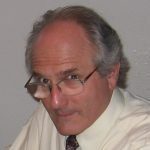JARED L. ZEFF, ND, VNMI, LAC
The following is not an article prepared for a medical journal. Not every statement of fact is cited or referenced. This is a commentary on the medicine, a running set of observations about practice in the field. It’s not meant to be a peer-reviewed presentation; rather, these are notes and thoughts from a practicing naturopathic physician, a primary care doc in general practice.
Courage in the Practice of Naturopathic Medicine
Last night on a recorded mentoring session, at the end of the hour, I was asked 2 questions that were very significant. I was answering the first when the second was asked, and I did not have time to fully address these concerns. I want to take up that discussion again here. The first question had to do with the title of my mentoring session, “Courage in the Practice of Naturopathic Medicine.” I was asked to explain that. The second question developed as I was addressing the first; it dealt with the potential threat to one’s license for doing something outside of the standard of care.
A Brief History of Medicine in America
There has been for a long time, and still remains, a general understanding in the minds of most people that naturopathic physicians are not real doctors, just as chiropractors are not real doctors. We are some kind of health care provider, to be sure, but not actually “doctors.” We do not go to real medical schools, we do not do hospital residencies, and so on. There is a kind of belief that, although we study anatomy from the same books as conventional medical students (sometimes with the same teachers from conventional schools), dissect cadavers, and even take licensure examinations administered or approved through a state government, we somehow do not really learn anatomy to the same degree or deserve the same recognition of licensure as conventional medical students.
A bit of history is appropriate. Naturopathic practice was licensed in Washington State in 1919 and in Oregon in 1927. Until the 1970s, the MD graduates, ND graduates, DO graduates, and DC graduates in Oregon all took the same state-administered basic science examinations for licensure, sitting side-by-side in the examination hall, graded by the same graders. We all had to pass at the same level, and, in fact, the naturopathic students’ rate of passage was consistently the highest of all the groups. But conventional medicine has been the standard and is the most recognized as such culturally. This is changing.
It was not always like this. As recent as 120 years ago, medicine as a general profession was held in very low regard. Doctors would amputate limbs if there was a significant infection – hence the appellation “sawbones” for a doctor or surgeon. It was primarily the discovery of antibiotics and the availability of penicillin (and then streptomycin in the 1950s) that helped the conventional medical profession rise in public opinion. By the 1960s, medicine was considered the most prestigious of all the professions. But that prestige was limited to MDs, and the American Medical Association (AMA) fought to keep it that way. In the late 1800s, when our profession was established in the United States by Benedict Lust, medicine as a field was populated by many different schools of thought, and most doctors were trained by apprenticeship. There were medical schools, but there was no standard in curriculum, clinical training, or even basic theory. During that time, several different medical professions arose, including chiropractic, osteopathy, homeopathy, naturopathy, and a few others. It was only in the 1920s that conventional medicine was standardized in training and modern medical theory. But with the rise of the conventional medical profession in the early 20th century, the discovery of effective anesthetics for surgery (and then antibiotics), and the support of several significant benefactors (Rockefeller, Carnegie, etc), the AMA was able to attain significant political power.
During the 1950s and 1960s, the AMA used this power to attempt to suppress and eliminate the “opposition” and was very successful. By 1945, the naturopathic profession had grown significantly. We had licensed nearly half the states and had around 20 four-year schools. But by 1979, when I graduated, we had only 6 states under licensure and only 1 school graduating doctors. We were considered over. Medical historians were writing that naturopathy was a “dead branch” on the tree of the healing arts. During the 1960s, many state statutes governing the licensure of naturopathic physicians were given sunset clauses at the behest of the AMA. Our profession was considered to have died under the onslaught of the AMA’s new power and respect. But naturopathic medicine, as it is now known, was not quite dead. The AMA was unable to end us, primarily because we are licensed by individual states, and the AMA does not control either the accreditation of our school nor the licensure of our doctors, as they do their own. Our practices are usually governed by separate statutes and separate licensure boards. We developed and got approved our own accreditation system. This independence has been our preservation.
As interest in homeopathy and other alternative medical practices has grown over the last 30 years, the FDA has increasingly tried to curtail our practices in various ways. Most recently, they discovered that they could regulate some of these practices into near oblivion. They found that by requiring homeopathic companies to test each remedy and potency for “purity,” they could make the manufacture of homeopathic medicines very expensive. First, we saw a reduction in potencies available, and then we saw several of the long-existing homeopathic houses quit making individual remedies, like Standard Homeopathic (Hylands). The same thing has occurred in Europe, though in a slightly different manner. In Canada, we were told that certain remedies, such as Nux vomica, are toxic, and cannot be sold, or others, such as Aurum metallicum, have no place in conventional medicine, and are therefore not valid medicines and cannot be sold. But we know, of course, that this argument is nonsense, because Nux vomica 30c is not a toxin and Aurum metallicum is a profoundly effective medicine. But this is how it has gone.
We are a Minority
We are a minority profession. When I was a young doctor, just coming up in the profession, I was told by my older mentors that if a patient died under the care of a medical doctor…well, that was just the nature of life; all was done that could be done and it is not the doctor’s fault. But if a patient dies under the care of a naturopathic doctor, that results in an investigation and a charge of murder or manslaughter. That is what being a minority is like. Although that example is not so relevant these days, it is still illegal to practice naturopathic medicine in South Carolina and Tennessee, as well as a few other places, and we are still unlicensed in about half of the states and provinces.
Being a minority profession has its difficulties, but also its peculiar advantages. When I was new in practice and there were so very few of us (maybe 200 or so in North America), we were nearly invisible. We had a small footprint. We hardly impinged upon the domination of the conventional medical profession and “big pharma.” Interest in naturopathic or “alternative” medicine was minimal, and few dollars were spent in our arena. There were few supplement companies. I recall only 3 when I started: NutriDyn, Seroyal, and Standard Process. This has changed, and now the entire industry of what is called “alternative medicine” generates a significant portion of the entire health care market. Because of this, we are no longer invisible, but are seen as primary competitors with the larger medical system and especially with the pharmaceutical industry.
This is why, I believe, we are seeing an increased attack on homeopathy, botanical medicine, and the supplement industry by the FDA. Because we are more visible and we have a greater audience, we have also had to become more careful. For example, do not dare to claim – at least not on the internet – that you treat upper respiratory viral infections, or that you can help enhance immune function. What we do in general is not acknowledged or approved by the FDA, and so we are subject to significant pressure to not violate these unspoken rules. This does not mean that we should hide or not do what we can do for our patients. It means that we must be judicious in how we do it.
I say this not because I want to preserve an arcane little profession for its own sake, but because we are able to help many people who are not helped by conventional medicine. We are a source of healing and hope for many who have not found it elsewhere, and we have significant value to our individual patients and to our communities.
Standard of Care
All of this history leads up to a consideration of what I mean by “courage in the practice of naturopathic medicine.” Recently, a preceptor in my clinic was surprised that I was treating several patients with illnesses that she had been told in school needed to be referred out. She was convinced that these were beyond our capacity to treat or care for. She said that I was violating the standard of care. I asked her, “Whose standard of care?” She said, “The standard of care. What do you mean, whose standard of care?” I explained to her that I was a naturopathic physician, not a medical doctor. Naturopathic medicine is a separate and distinct branch of the healing arts and defined as such. We operate under a distinct philosophy. We have created a distinct infrastructure within which to practice, including separate practice statutes, separate schools, separate accreditation agencies, and separate licensing boards. We have our own state and national professional associations. And we have our own standard of care, and WE determine what that standard is. She was confused.
I used an example to try to explain this. If a patient comes to me with acute cystitis (a bladder infection), I am not required to treat it with an antibiotic. If I were a conventional physician (say, an MD, a PA, or a nurse practitioner), I would most likely prescribe an antibiotic, and would likely be considered remiss if I did not. But I rarely prescribe an antibiotic for a bladder infection. I am more likely to prescribe a botanical formula and/or a homeopathic medicine. And I do so not on the basis of the cultured bacterium, but on the symptom picture. This is not what MDs do, but it is common for naturopathic physicians to do this. And in the case of recurrent bladder infections, I will look at the diet and other lifestyle factors as causative, and most likely will recommend a dietary change. MDs do not do that; they might give a long series of a prophylactic antibiotic. We do different things because we think differently. We are a different profession, and we have a different standard of care.
Around 1990, the AANP, under the leadership of President Thom Kruzel, wrote its first standards of care document – at least, the first of which I am aware. I was on that committee. It stated that our standard of care, simply put, is to do what works, on a rational basis, with timely follow up, and to change our approach in a timely manner if needed. There is not, for example, a prescribed way to treat bladder infections, but what one does must have a rational basis, be done in a timely manner, and be demonstrated to be effective. One could use homeopathic medicine, botanical medicine, dietary supplementation, manipulation, even antibiotics if within one’s scope. But if it does not work in an appropriate amount of time, do something else that does work or refer the patient for more expert care. Be responsible, be effective, and do it within one’s individual scope and philosophy. That is our standard of care.
History Is Still Being Written
When I began practicing, there were few doctors and fewer teachers, and we had to rediscover much of the medicine. It was almost as if we had to “go where no one had gone before” and discover what worked. It required courage to practice this medicine. Who was I, a young man, to work outside the box with little infrastructure to support or back me up? One had to wonder, occasionally, if one were a bit nuts. But we are going through a novel pandemic in which not only has there been no clear path to follow in treating those with the illness, but in which it has been increasingly clear that medical authorities and government agencies have had little efficacy in mitigating or controlling the spread of the disease. Furthermore, known treatment methods that could potentially aid in lessening symptom progression, aid in recovery, or help mitigate long-term sequelae have been sidelined (rather than properly investigated or supported) due to blanket policies designed to prevent fraud or abuse. One could say that we have not seen this kind of thing before. But that is not true. I have seen it. I often treated people with medicine – such as homeopathy – that “medical authorities” claimed would not work, yet I saw them work extremely effectively and safely. I, as a naturopathic doctor, have been used to operating in such an arena. But it takes courage to do so. One must serve the patient above all else, and do so effectively, and rationally, and judiciously, even in the face of substantial opposition. That is the function of the physician – to treat the sick and ease suffering.
I have often given a prayer of thanks that God set me on this path, the one rarely taken. It may have required more courage, but I have found great satisfaction in helping people who had not been able to find help elsewhere. I love our little profession and our courageous colleagues.
Respectfully,
Jared L. Zeff, ND, VNMI, LAc

Jared L. Zeff, ND, VNMI, LAc is a licensed doctor of naturopathic medicine and a licensed acupuncturist. In addition to functioning as Medical Director at the Salmon Creek Naturopathic Clinic in Vancouver, WA, Dr Zeff taught on the faculty at National University of Natural Medicine in Portland, OR, where he was also Dean from 1988 to 1993, and holds a professorship in Naturopathic Medicine. Dr Zeff is a graduate of the University of California, NCNM, and the Emperor’s College of Traditional Oriental Medicine. He, along with Pamela Snider, is the author of the AANP’s Definition of Naturopathic Medicine, and the Therapeutic Order concept.





